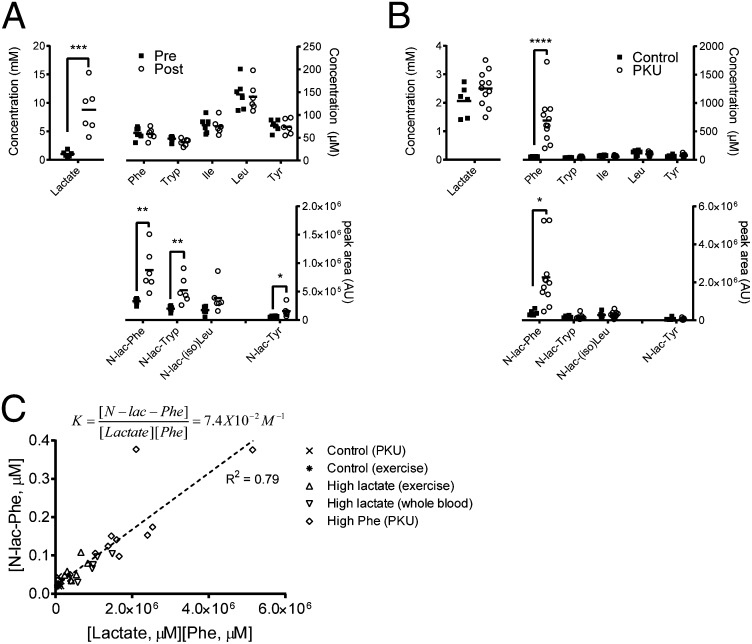Fig. 6.
N-lactoyl-amino acid levels in human plasma depend on lactate and amino acid concentrations. (A) Plasma was collected from human volunteers before (pre) and after (post) 5–10 min of strenuous exercise. Lactate and N-lactoyl-amino acid levels in human plasma rapidly increase after physical exercise, whereas the corresponding amino acid levels are unaffected. N-lactoyl-amino acid levels did not increase in resting controls. Horizontal bars represent means (n = 6). (B) Phe and N-lac-Phe levels are significantly increased in plasma of patients with PKU compared with controls, whereas plasma levels of other amino acids, N-lactoyl-amino acids, and lactate are similar. Horizontal bars represent means (n = 6 for controls, n = 11 for patients with PKU). (C) Plasma N-lac-Phe levels are in apparent equilibrium with plasma lactate and Phe levels. Plasma samples obtained from patients with PKU and controls, volunteers before and after exercise, and controls with high lactate due to prolonged whole-blood storage at ambient temperature were analyzed for lactate, Phe, and N-lac-Phe concentration as described in Materials and Methods (n = 34). The dotted line represents a fitted linear function, of which the slope is 7.4 × 10−2⋅M−1. N-lac-Phe is not formed in plasma (Fig. S7).

